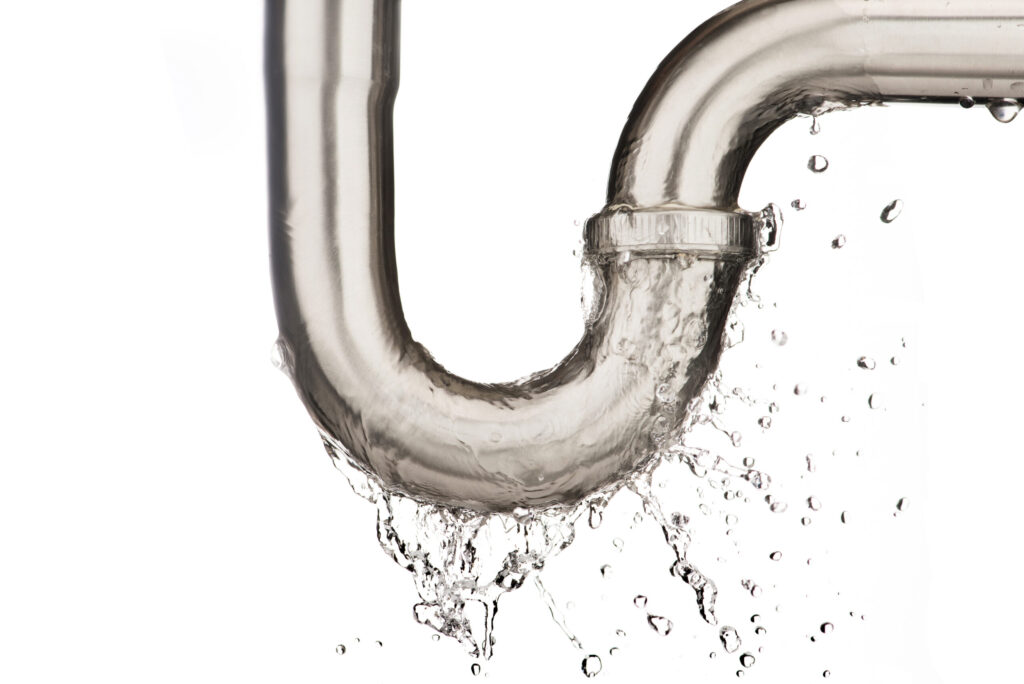Most people don’t pay attention to the pipes in their homes, but even the smallest leak can quickly escalate into major water damage. You may not realize it until it’s too late, but a leaky pipe can become a serious problem.
By knowing the basics of pipe repair, you can save yourself a lot of stress and money. In this article, we’re going to talk about the signs of a leaky pipe, how they’re repaired, and when to call a professional.
5 Signs of a Leaky Pipe
When it’s not something you actively think about, how do you know you have a leaky pipe? Here’s how you can tell if you have a leaky pipe at home:
Water stains
Any yellow or brown water stains on your walls, ceilings, or floor can be a hidden leak.
Wet areas
Are there specific areas in your home that are wet? It may be a leak.
Mold
Wetness and mold are best friends. If you have mold in your home, the odds are there’s a leaky pipe behind it.
Unexplained water bills
If you suddenly have a high water bill that you can’t account for, check your pipes—it may be a leak.
Low water pressure
A leaky pipe can create low water pressure, especially if the leak is large.
If your home shows any of the signs above, it’s important to check for a leaky pipe before things get worse.
How Pipe Repair Works
Let’s say you have a leaky pipe that needs to be fixed. What happens next? Pipe repair can be a quick and easy job, or if the leak is severe, it can be extremely complex. Here are a few ways professionals repair leaky pipes.
-
Pipe Replacement
If your leak is severe and you have corroded or cracked pipes, those pipes will need to be fully replaced. This repair method is common in older homes with metal pipes. Typically, the plumber will replace the damaged section with a durable material like PVC, PEX, or copper.
-
Pipe Lining or Trenchless Pipe Repair
Trenchless pipe repair is a newer method that completely removes the need to do any digging. Typically, the plumber will use a flexible liner, inserting it into the damaged pipe which will harden and form inside the old pipe. It’s a great method for hard-to-reach areas, and if you’re looking for the least invasive method.
-
Epoxy Pipe Lining
Epoxy pipe lining requires the plumber to use a special resin inside the pipe to seal any cracks. Once the resin hardens, it becomes a smooth layer within the old pipe. This method is recommended for minor cracks or leaks.
-
Soldering (for metal pipes)
If you have metal pipes, you may be able to repair a crack or leak through soldering. The plumber will heat up the area and metal the pipe back together. It’s ideal for small leaks or cracks in copper pipes.
-
Pipe Clamps or Patches
If you have small leaks or pinhole-sized holes, you may not need a full replacement. Pipe clamps or patches are a temporary solution to stop the leak until a full repair can be done. It’s a quick fix that isn’t permanent.
When Do You Need To Call a Professional?
Most minor repairs can be treated using a pipe clamp or an epoxy sealant, which you can do yourself. However, if you’re not sure what to do, it’s always best to call a professional. They’ll be able to assess your situation and fix the problem. Sometimes, going the DIY route can make things worse.
Conclusion
Leaky pipes are often seen as minor issues and are usually pushed aside for later repairs. But the smallest of leaks can cause serious issues in your home if you leave them to their own devices. Whether you need a full replacement or a quick fix, contact us to work with a professional plumber contractor who respects your time and your home.
FAQ’s About Pipe Repair
1. What are the warning signs of a leaky pipe?
Common signs include water stains on walls or ceilings, unexplained wet areas, mold growth, a sudden increase in your water bill, and low water pressure.
2. How do plumbers repair leaky pipes?
Depending on the severity, plumbers may use methods like full pipe replacement, epoxy pipe lining, trenchless repair, soldering for metal pipes, or temporary fixes like pipe clamps.
3. Can I repair a leaky pipe myself?
Small leaks may be temporarily fixed with pipe clamps or epoxy sealant, but for anything beyond minor issues, it’s best to call a professional plumber to avoid causing further damage.
4. What is trenchless pipe repair, and when is it used?
Trenchless pipe repair involves inserting a flexible liner into the damaged pipe, which hardens to form a new pipe inside. It’s ideal for hard-to-reach areas and avoids the need for digging.


Schedule a Service or Request a FREE Estimate Now: